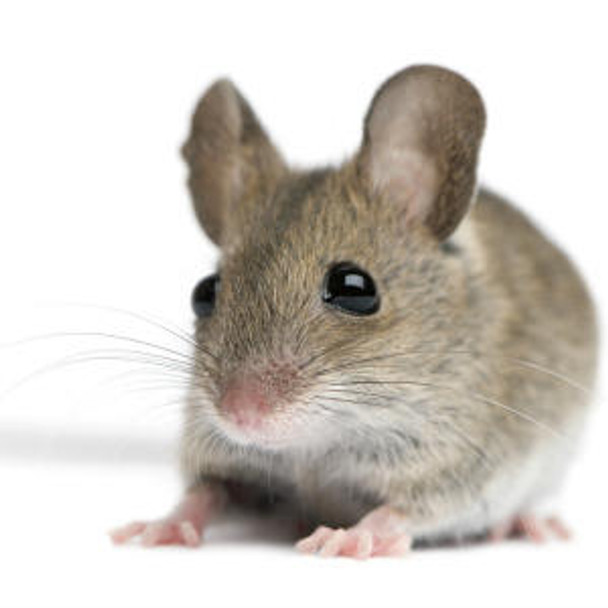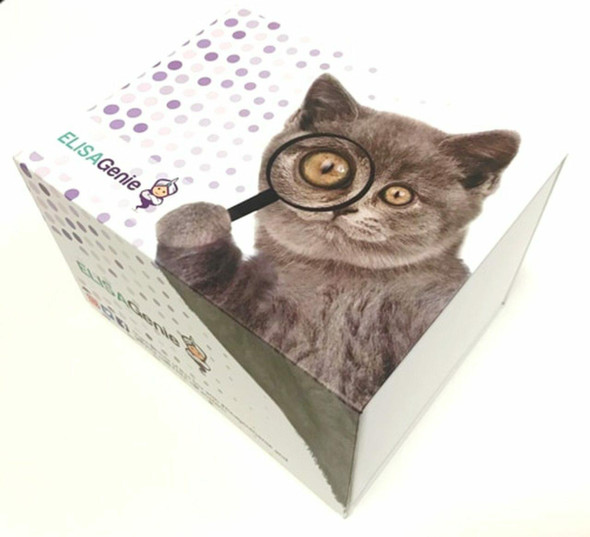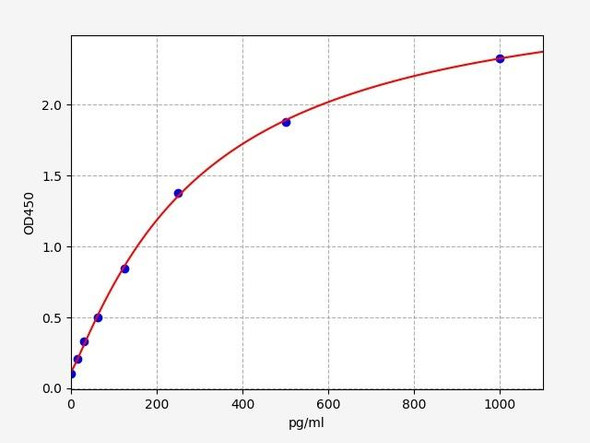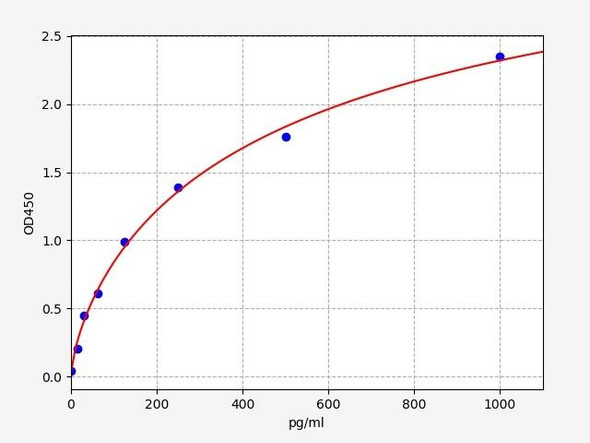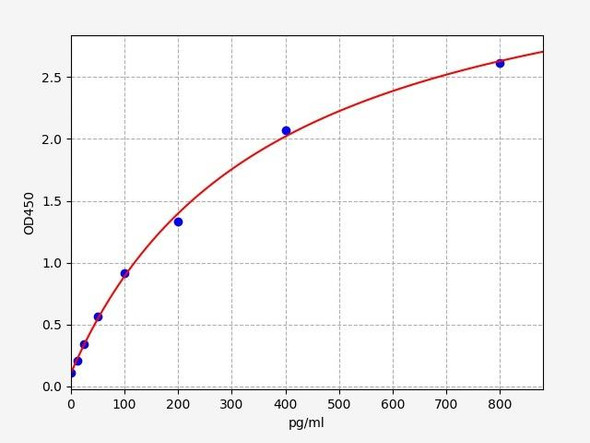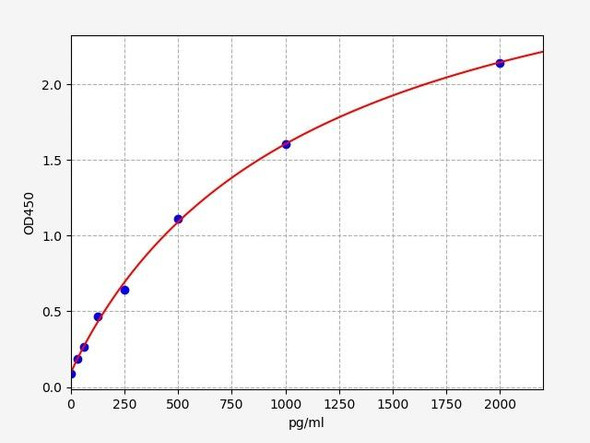Mouse IL-7r ELISA Kit (MOEB1923)
- SKU:
- MOEB1923
- Product Type:
- ELISA Kit
- Size:
- 96 Assays
- Uniprot:
- P16872
- ELISA Type:
- Sandwich
- Reactivity:
- Mouse
Description
Mouse IL-7r ELISA Kit
The Mouse IL7R ELISA Kit is specifically engineered for the precise measurement of interleukin-7 receptor (IL7R) levels in mouse serum, plasma, and tissue culture supernatants. With its advanced sensitivity and specificity, this kit delivers consistent and dependable results, making it an invaluable tool for a variety of research endeavors.IL7R is a critical component in the immune system, regulating the proliferation and differentiation of lymphocytes.
Dysregulation of IL7R expression has been linked to various autoimmune diseases, lymphomas, and other immune-related disorders. By accurately monitoring IL7R levels, researchers can gain deeper insights into the role of this receptor in health and disease, potentially leading to new therapeutic strategies.
| Product Name: | Mouse IL-7r ELISA Kit |
| SKU: | MOEB1923 |
| Size: | 96T |
| Target: | Mouse IL-7r |
| Synonyms: | CD127, IL-7 receptor subunit alpha |
| Assay Type: | Sandwich |
| Detection Method: | ELISA |
| Reactivity: | Mouse |
| Detection Range: | 78-5000pg/mL |
| Sensitivity: | 39pg/mL |
| Intra CV: | 7.5% | ||||||||||||||||||||
| Inter CV: | 9.7% | ||||||||||||||||||||
| Linearity: |
| ||||||||||||||||||||
| Recovery: |
| ||||||||||||||||||||
| Function: | Receptor for interleukin-7. Also acts as a receptor for thymic stromal lymphopoietin (TSLP). |
| Uniprot: | P16872 |
| Sample Type: | Serum, plasma, tissue homogenates, cell culture supernates and other biological fluids |
| Specificity: | Natural and recombinant mouse Interleukin-7 receptor subunit alpha |
| Sub Unit: | The IL7 receptor is a heterodimer of IL7R and IL2RG. The TSLP receptor is a heterodimer of CRLF2 and IL7R. |
| Research Area: | Immunology |
| Subcellular Location: | Membrane Single-pass type I membrane protein |
| Storage: | Please see kit components below for exact storage details |
| Note: | For research use only |
| UniProt Protein Function: | IL7R: Receptor for interleukin-7. Also acts as a receptor for thymic stromal lymphopoietin (TSLP). Defects in IL7R are a cause of severe combined immunodeficiency autosomal recessive T-cell-negative/B-cell- positive/NK-cell-positive (T(-)B(+)NK(+) SCID). A form of severe combined immunodeficiency (SCID), a genetically and clinically heterogeneous group of rare congenital disorders characterized by impairment of both humoral and cell-mediated immunity, leukopenia, and low or absent antibody levels. Patients present in infancy recurrent, persistent infections by opportunistic organisms. The common characteristic of all types of SCID is absence of T-cell-mediated cellular immunity due to a defect in T-cell development. Genetic variations in IL7R are a cause of susceptibility to multiple sclerosis type 3 (MS3). A multifactorial, inflammatory, demyelinating disease of the central nervous system. Sclerotic lesions are characterized by perivascular infiltration of monocytes and lymphocytes and appear as indurated areas in pathologic specimens (sclerosis in plaques). The pathological mechanism is regarded as an autoimmune attack of the myelin sheat, mediated by both cellular and humoral immunity. Clinical manifestations include visual loss, extra-ocular movement disorders, paresthesias, loss of sensation, weakness, dysarthria, spasticity, ataxia and bladder dysfunction. Genetic and environmental factors influence susceptibility to the disease. A polymorphism at position 244 strongly influences susceptibility to multiple sclerosis. Overtransmission of the major 'C' allele coding for Thr-244 is detected in offspring affected with multiple sclerosis. In vitro analysis of transcripts from minigenes containing either 'C' allele (Thr-244) or 'T' allele (Ile-244) shows that the 'C' allele results in an approximately two-fold increase in the skipping of exon 6, leading to increased production of a soluble form of IL7R. Thus, the multiple sclerosis associated 'C' risk allele of IL7R would probably decrease membrane-bound expression of IL7R. As this risk allele is common in the general population, some additional triggers are probably required for the development and progression of MS. Belongs to the type I cytokine receptor family. Type 4 subfamily. 4 isoforms of the human protein are produced by alternative splicing. |
| UniProt Protein Details: | Protein type:Receptor, cytokine; Membrane protein, integral Cellular Component: membrane; integral to membrane; external side of plasma membrane Molecular Function:hematopoietin/interferon-class (D200-domain) cytokine receptor activity Biological Process: positive regulation of T cell differentiation in the thymus; B cell proliferation; negative regulation of T cell mediated cytotoxicity; homeostasis of number of cells; cell morphogenesis; immunoglobulin production; cell growth; lymph node development; regulation of cell size; T cell differentiation |
| NCBI Summary: | Interleukin-7 is a glycoptorein involved in the regulation of lymphopoiesis. Response of cells to IL7 is dependent on the presence of the interleukin 7 receptor (IL7R); the active receptor is a alpha/gamma chain heterodimer. The gamma(c) chain, which also associates with the interleukin-2 receptor, serves primarily to activate signal transduction by the IL7R complex, while the alpha chain of IL7R determines specific signaling events through its association with cytoplasmic signaling molecules. [provided by RefSeq, Jul 2008] |
| UniProt Code: | P16872 |
| NCBI GenInfo Identifier: | 341940827 |
| NCBI Gene ID: | 16197 |
| NCBI Accession: | P16872.2 |
| UniProt Secondary Accession: | P16872,Q9R0C1, |
| UniProt Related Accession: | P16872 |
| Molecular Weight: | 51,605 Da |
| NCBI Full Name: | Interleukin-7 receptor subunit alpha |
| NCBI Synonym Full Names: | interleukin 7 receptor |
| NCBI Official Symbol: | Il7r |
| NCBI Official Synonym Symbols: | CD127; IL-7Ralpha |
| NCBI Protein Information: | interleukin-7 receptor subunit alpha; IL-7RA; IL-7R-alpha; IL-7R subunit alpha; IL-7 receptor alpha chain; IL-7 receptor subunit alpha; interleukin 7 receptor alpha chain |
| UniProt Protein Name: | Interleukin-7 receptor subunit alpha |
| UniProt Synonym Protein Names: | CD_antigen: CD127 |
| Protein Family: | Interleukin-7 receptor |
| UniProt Gene Name: | Il7r |
| UniProt Entry Name: | IL7RA_MOUSE |
| Component | Quantity (96 Assays) | Storage |
| ELISA Microplate (Dismountable) | 8×12 strips | -20°C |
| Lyophilized Standard | 2 | -20°C |
| Sample Diluent | 20ml | -20°C |
| Assay Diluent A | 10mL | -20°C |
| Assay Diluent B | 10mL | -20°C |
| Detection Reagent A | 120µL | -20°C |
| Detection Reagent B | 120µL | -20°C |
| Wash Buffer | 30mL | 4°C |
| Substrate | 10mL | 4°C |
| Stop Solution | 10mL | 4°C |
| Plate Sealer | 5 | - |
Other materials and equipment required:
- Microplate reader with 450 nm wavelength filter
- Multichannel Pipette, Pipette, microcentrifuge tubes and disposable pipette tips
- Incubator
- Deionized or distilled water
- Absorbent paper
- Buffer resevoir
*Note: The below protocol is a sample protocol. Protocols are specific to each batch/lot. For the correct instructions please follow the protocol included in your kit.
Allow all reagents to reach room temperature (Please do not dissolve the reagents at 37°C directly). All the reagents should be mixed thoroughly by gently swirling before pipetting. Avoid foaming. Keep appropriate numbers of strips for 1 experiment and remove extra strips from microtiter plate. Removed strips should be resealed and stored at -20°C until the kits expiry date. Prepare all reagents, working standards and samples as directed in the previous sections. Please predict the concentration before assaying. If values for these are not within the range of the standard curve, users must determine the optimal sample dilutions for their experiments. We recommend running all samples in duplicate.
| Step | |
| 1. | Add Sample: Add 100µL of Standard, Blank, or Sample per well. The blank well is added with Sample diluent. Solutions are added to the bottom of micro ELISA plate well, avoid inside wall touching and foaming as possible. Mix it gently. Cover the plate with sealer we provided. Incubate for 120 minutes at 37°C. |
| 2. | Remove the liquid from each well, don't wash. Add 100µL of Detection Reagent A working solution to each well. Cover with the Plate sealer. Gently tap the plate to ensure thorough mixing. Incubate for 1 hour at 37°C. Note: if Detection Reagent A appears cloudy warm to room temperature until solution is uniform. |
| 3. | Aspirate each well and wash, repeating the process three times. Wash by filling each well with Wash Buffer (approximately 400µL) (a squirt bottle, multi-channel pipette,manifold dispenser or automated washer are needed). Complete removal of liquid at each step is essential. After the last wash, completely remove remaining Wash Buffer by aspirating or decanting. Invert the plate and pat it against thick clean absorbent paper. |
| 4. | Add 100µL of Detection Reagent B working solution to each well. Cover with the Plate sealer. Incubate for 60 minutes at 37°C. |
| 5. | Repeat the wash process for five times as conducted in step 3. |
| 6. | Add 90µL of Substrate Solution to each well. Cover with a new Plate sealer and incubate for 10-20 minutes at 37°C. Protect the plate from light. The reaction time can be shortened or extended according to the actual color change, but this should not exceed more than 30 minutes. When apparent gradient appears in standard wells, user should terminatethe reaction. |
| 7. | Add 50µL of Stop Solution to each well. If color change does not appear uniform, gently tap the plate to ensure thorough mixing. |
| 8. | Determine the optical density (OD value) of each well at once, using a micro-plate reader set to 450 nm. User should open the micro-plate reader in advance, preheat the instrument, and set the testing parameters. |
| 9. | After experiment, store all reagents according to the specified storage temperature respectively until their expiry. |
When carrying out an ELISA assay it is important to prepare your samples in order to achieve the best possible results. Below we have a list of procedures for the preparation of samples for different sample types.
| Sample Type | Protocol |
| Serum | If using serum separator tubes, allow samples to clot for 30 minutes at room temperature. Centrifuge for 10 minutes at 1,000x g. Collect the serum fraction and assay promptly or aliquot and store the samples at -80°C. Avoid multiple freeze-thaw cycles. If serum separator tubes are not being used, allow samples to clot overnight at 2-8°C. Centrifuge for 10 minutes at 1,000x g. Remove serum and assay promptly or aliquot and store the samples at -80°C. Avoid multiple freeze-thaw cycles. |
| Plasma | Collect plasma using EDTA or heparin as an anticoagulant. Centrifuge samples at 4°C for 15 mins at 1000 × g within 30 mins of collection. Collect the plasma fraction and assay promptly or aliquot and store the samples at -80°C. Avoid multiple freeze-thaw cycles. Note: Over haemolysed samples are not suitable for use with this kit. |
| Urine & Cerebrospinal Fluid | Collect the urine (mid-stream) in a sterile container, centrifuge for 20 mins at 2000-3000 rpm. Remove supernatant and assay immediately. If any precipitation is detected, repeat the centrifugation step. A similar protocol can be used for cerebrospinal fluid. |
| Cell culture supernatant | Collect the cell culture media by pipette, followed by centrifugation at 4°C for 20 mins at 1500 rpm. Collect the clear supernatant and assay immediately. |
| Cell lysates | Solubilize cells in lysis buffer and allow to sit on ice for 30 minutes. Centrifuge tubes at 14,000 x g for 5 minutes to remove insoluble material. Aliquot the supernatant into a new tube and discard the remaining whole cell extract. Quantify total protein concentration using a total protein assay. Assay immediately or aliquot and store at ≤ -20 °C. |
| Tissue homogenates | The preparation of tissue homogenates will vary depending upon tissue type. Rinse tissue with 1X PBS to remove excess blood & homogenize in 20ml of 1X PBS (including protease inhibitors) and store overnight at ≤ -20°C. Two freeze-thaw cycles are required to break the cell membranes. To further disrupt the cell membranes you can sonicate the samples. Centrifuge homogenates for 5 mins at 5000xg. Remove the supernatant and assay immediately or aliquot and store at -20°C or -80°C. |
| Tissue lysates | Rinse tissue with PBS, cut into 1-2 mm pieces, and homogenize with a tissue homogenizer in PBS. Add an equal volume of RIPA buffer containing protease inhibitors and lyse tissues at room temperature for 30 minutes with gentle agitation. Centrifuge to remove debris. Quantify total protein concentration using a total protein assay. Assay immediately or aliquot and store at ≤ -20 °C. |
| Breast Milk | Collect milk samples and centrifuge at 10,000 x g for 60 min at 4°C. Aliquot the supernatant and assay. For long term use, store samples at -80°C. Minimize freeze/thaw cycles. |

